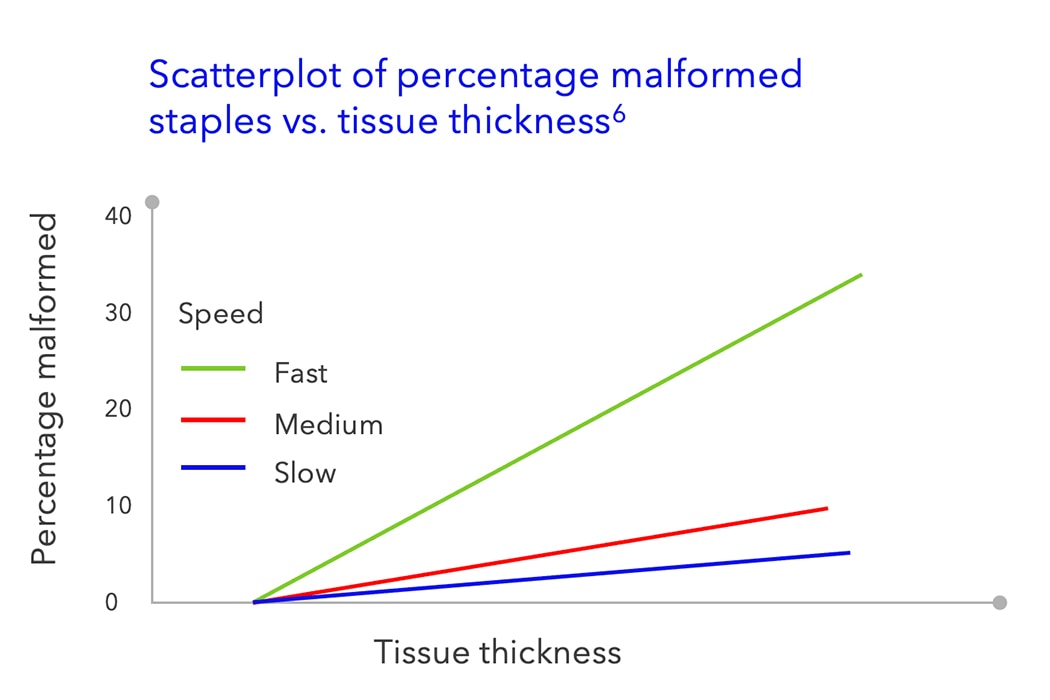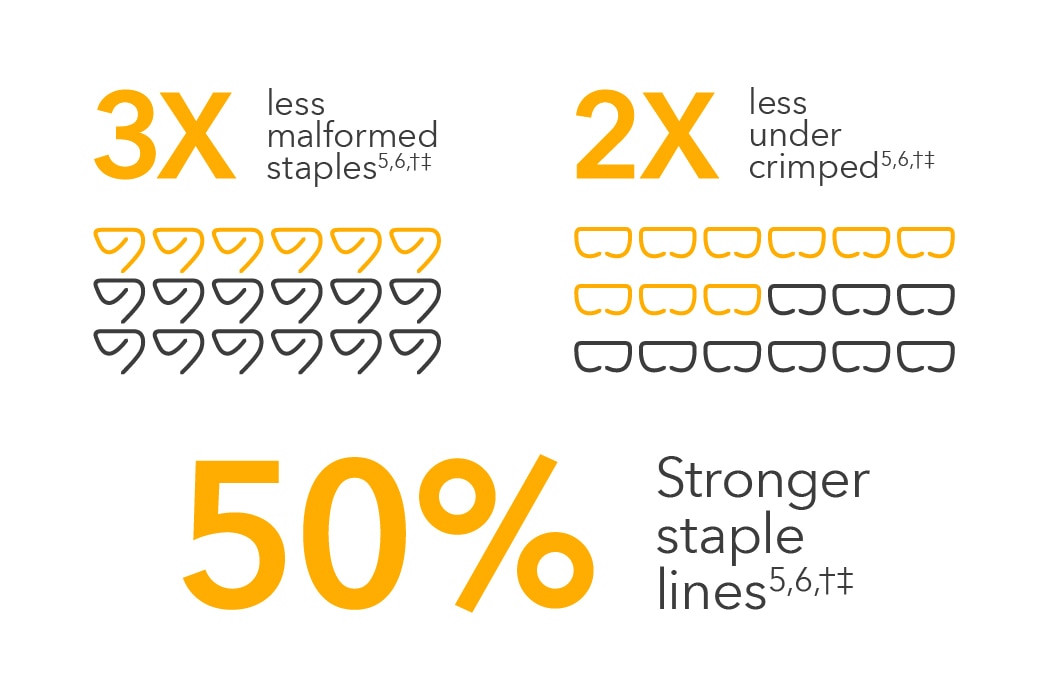References
Please see the package insert for the complete list of indications, warnings, precautions, and other important medical information.
† Preclinical results may not correlate with clinical performance in humans.
‡ Compared to Ethicon powered stapler with GST technology.
‡‡ Compared to manual and fixed-speed powered staplers.
1. Based on internal test report #RE00024826, Signia™ stapling system summative usability report, January 2016.
2. Based on internal test report #R2146-151-0, Powered stapling firing speed DOE analysis and ASA parameters: preliminary ex vivo porcine model data using various speeds a user can deploy staples with a manual handle (n=243 firings). 2015.
3. Based on internal test report #RE00147607, 4.5 mm round staple pull-apart analysis report.
4. Based on internal test report #R2146-173-0, ASA Verification Testing with Slow Speed Force Limit Evaluation, 2015.
5. Based on internal report #RE00218740, Signia™ stapling adaptive firing technology data calculations and references (memo). August 7, 2019.
6. Based on internal test report #PCG-028, Signia+ stapling system competitive claims. March 27, 2017.
7. Based on internal test report #PCG-032, Comparison of undercrimped staple measurements between Medtronic and Ethicon powered stapling platforms.



